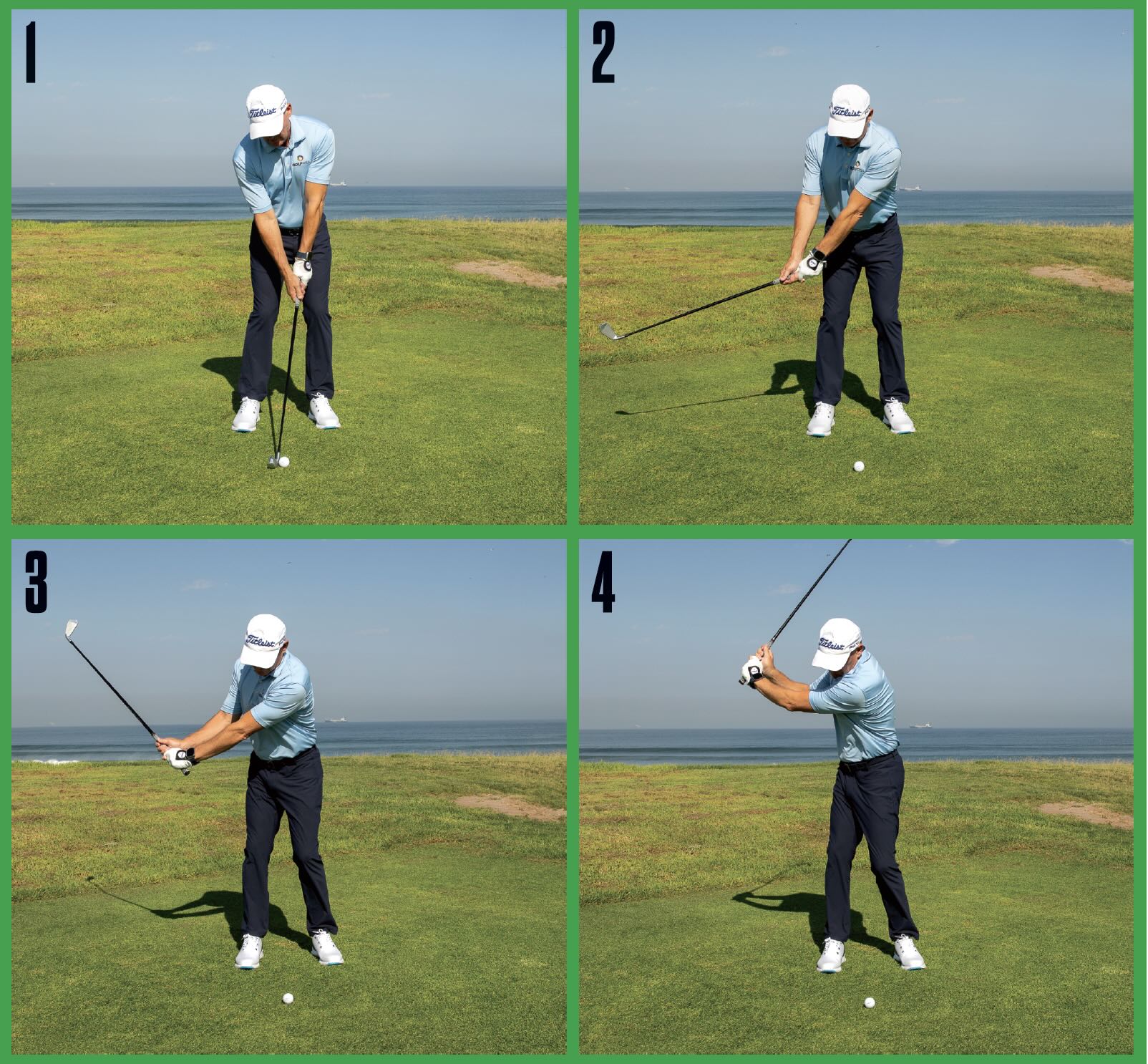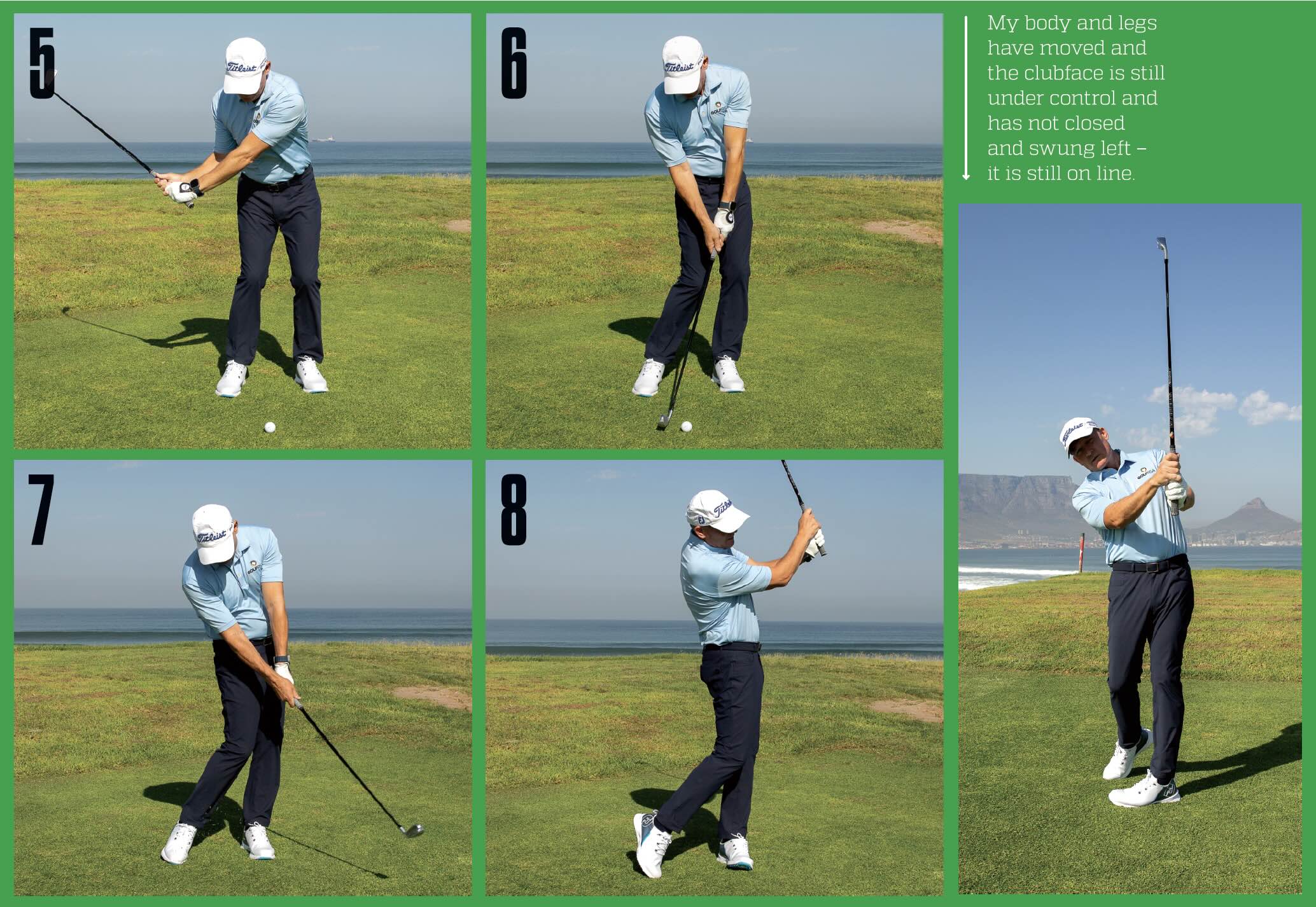Controlling your ball flight is key to playing well in windy conditions, explains PGA professional GRANT HEPBURN.
Playing golf in strong winds can be hard. Not only can it knock your ball off line, but playing into the wind can make the hole play much longer. Even playing downwind can be tricky, as it is hard to gauge distance for your approach shots and stop the ball on the green.
This month’s tip is about how to keep the ball low when playing into the wind. The idea here is that a lower ball flight with lower spin is less affected by the wind, meaning that you will have more control and, hopefully, a little more distance.
The key to keeping the ball low is to use your legs and body through the impact and follow-through area in order to hit this shot successfully. Let me show you how.
Getting it right
The first thing to think about is to take more club than you normally would for the distance.
In this instance, I am using a 4-iron for a 7-iron distance. The reason is that I need to hit the ball quite softly and low under the wind.
The longer club, with less loft, makes it easier to make a three-quarter swing and smoothly strike the back of the ball. The softer strike and lower loft creates less spin, so the ball doesn’t climb up into the air and it flies the required distance to the target without much effect from the wind.
To enable this more controlled shot under the wind, I set up with a narrow stance. Note how my weight is on my left foot at address and stays there during the three-quarter backswing.
The biggest key, however, and the main aspect of this tip, is to make sure that you commit to using your legs and body through the impact area and into the finish. This enables you to keep control of the club and keep the club swinging on line to the target.
My body and legs have moved and the clubface is still under control and has not closed and swung left – it is still on line.
Getting it wrong
In this sequence I am demonstrating a common fault that amateurs make.
In an effort to use a three-quarter swing and hit a smooth shot under the wind, many ammies stop using their legs and body through the impact area.
Notice how this causes my club to flip over through the impact area and beyond, causing the clubface to close quickly and the club to swing left. This can lead to a nasty pull or hook shot and a loss of power because the body is not supporting the arms in the swing.
My body has stopped moving through impact and the clubface has flipped closed and left, leading to a nasty pull shot.
– This article first appeared in the April 2024 issue of Compleat Golfer magazine.













